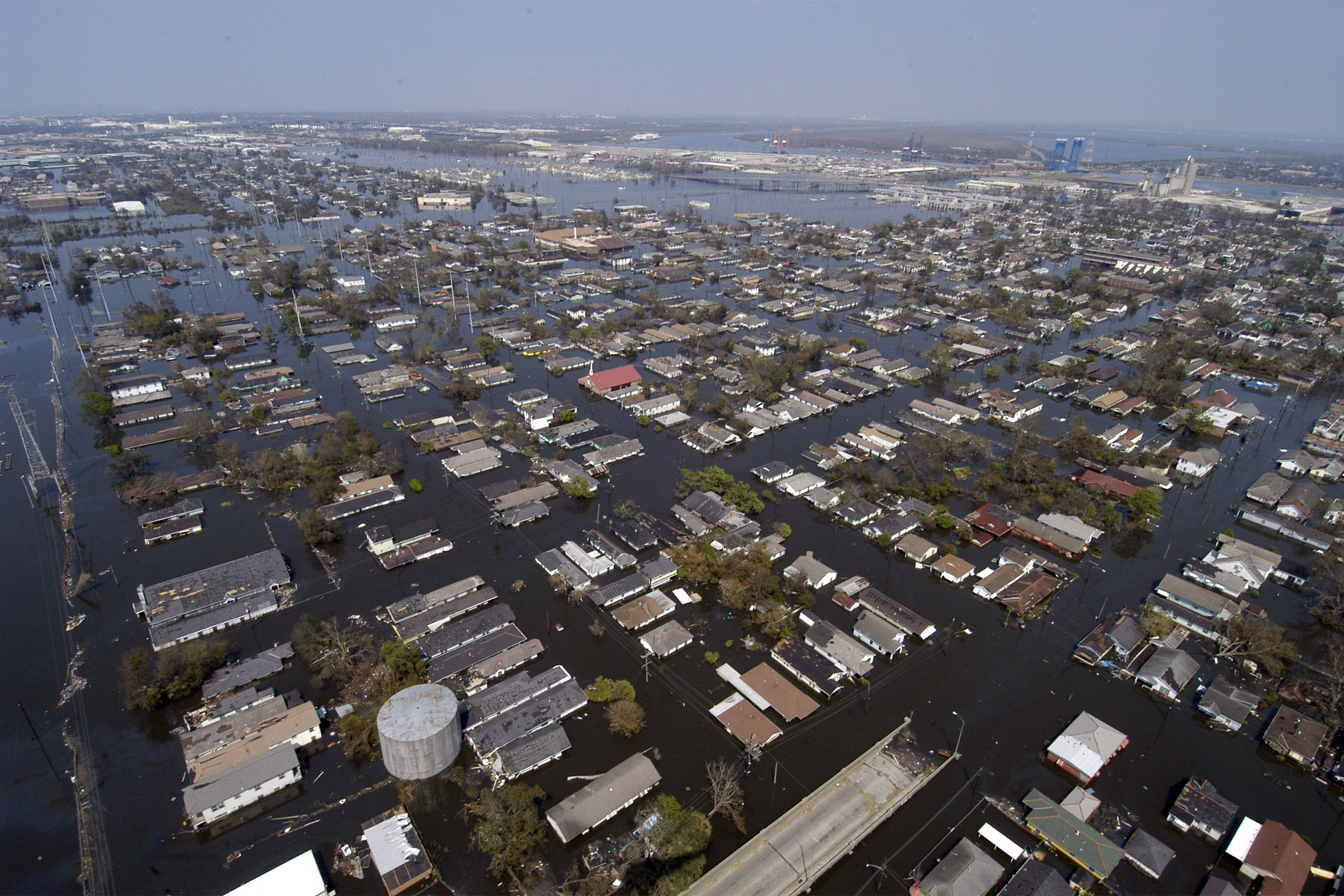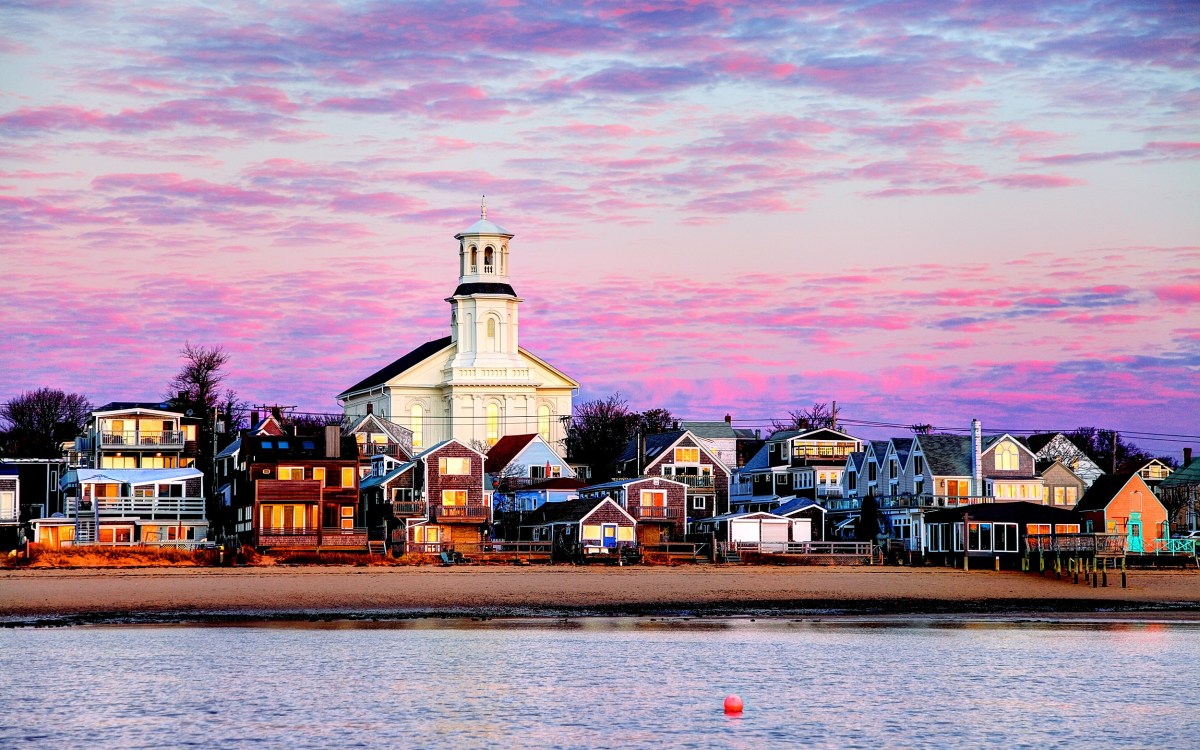
Jerry Coli/Pixabay
Want to avoid climate-related disasters? Try moving
Study makes the case for thoughtful, planned ‘managed retreat’ from areas prone to flooding and storms
For those who lived through the storms, their names — Katrina, Sandy, Harvey, Michael — are enough to trigger memories of homes, businesses, and loved ones lost in rising floodwaters. Other disasters elicited similar reactions, from the Midwest floods to the California wildfires, and droughts in the Great Plains.
The eventual response to catastrophes tended to be a defiant vow to rebuild, turn loss into lesson by making protective seawalls higher and stronger to hold back floods, or raising homes onto stilts to stay clear of the encroaching waves.
To this, A.R. Siders says, “Enough.” The time has come to consider a different path: retreat. Abandon areas prone to repeated disaster in favor of those that are safer and do so in a deliberate, thoughtful way.
Known as “managed retreat,” Siders, an Environmental Fellow at the Harvard University Center for the Environment who recently joined the faculty of the University of Delaware, said the strategy has the potential to save not only lives, but possibly billions of dollars in direct and indirect costs to cities and towns. The idea is described in an Aug. 23 paper published in Science with co-authors Miyuki Hino and Katharine Mach.
“Traditionally speaking, there are three ways people respond to floods or hurricanes,” Siders said. “There is protection — basically building a sea wall. There’s accommodation, which often means homes that are elevated, or there’s retreat.
“We see retreat listed as an option as early as 2001 by the [Intergovernmenal Panel on Climate Change], but retreat has been seen as largely theoretical — somewhere, sometime people might have to move. But what we’re seeing more and more is that it might be here and that it might be now. It’s no longer a theoretical last resort. It’s something we should talk about now as a realistic option.”
The purpose of the paper, Siders said, is to call attention to the need for a greater focus on the strategy as a way to avoid the fallout seen from earlier disasters.

New Orleans following Hurricane Katrina.
David Mark/Pixabay
“The point we’re trying to make is: Retreat will happen; people will move. Not managing retreat doesn’t stop people from moving,” Siders said. “After Hurricane Katrina, people had their homes destroyed, and they moved with no help and no support. They just left.”
For the neighborhoods they leave behind, the results can be corrosive.
“You have thousands of empty homes, and the city has to figure out who owns them,” she said. “They have to sell or demolish them, and maintain the lots. So it eats away at the community, because it’s dotted with vacant homes, and it eats away at the city’s resources.
“But if you do manage it and try to do this in a strategic way, then you have a better chance of avoiding those harms,” she continued.
The notion of managed retreat, however, is about more than what happens to the homes people leave behind when they flee.
“It touches on so many aspects of a city,” Siders said. “You have to think about things like where people are going — where they’re choosing to go and where you want to provide incentives for them to go.
“What are the effects on the community they’re moving to? Do they have enough services? Do they have enough hospitals and schools to take in the people they’re receiving? For the people who stay behind, do they suddenly have no sense of community because of all these vacant lots, or do they have something like a new public park or feature to maintain a sense of community?”
Those questions only deepen, Siders said, when retreat crosses national and cultural borders.
“That coordination can happen when people leave New Orleans and go to Houston,” she said. “But what happens when you’re crossing national borders? How do you handle that? So far much of the focus has been on making people safer … but there’s not a lot of focus on if they’re better off holistically, on the emotional or cultural or social aspects. And those are important issues.”
For some communities, retreat could mean leaving behind centuries of cultural and religious connection to a particular land, something people are often unwilling to do.
“There are examples where people have overcome these problems in creative ways,” Siders said. “There is a community in Indonesia where people moved away from a volcano, but they were allowed to return to visit, and they were given rights to provide tourism in the area, so now they have an economic benefit they didn’t before.
“So the problems are not insurmountable,” she continued. “They’re challenging, but they’re not insurmountable, and they can be much more easily overcome if people start thinking about retreat as a real option, and how it ties in to these other issues.”
Though it remains an uphill battle to convince communities to consider ideas like managed retreat, Siders said, the tide is slowly turning.
“It’s still a very difficult topic to talk about, but in the last few years we’ve seen such drastic wildfires and floods just in the U.S. … there’s a major push for people to start thinking of retreat as an option,” she said. “Just in the time since Sandy there’s been a shift in our thinking. I was in New York during the storm and wrote a paper about the legal strategies that could be used to help communities undertake managed retreat, and no one wanted to talk about it. But fast-forward to this spring, and Columbia University had a conference on managed retreat with 150 presentations. I think people are starting to see the effects of climate change and realize that extreme changes require extreme adaptation.”
This research was supported with funding from the Harvard University Center for the Environment, Stanford Woods Institute for the Environment, and the Sykes Family Fellowship in Stanford University’s Emmett Interdisciplinary Program in Environment and Resources.







